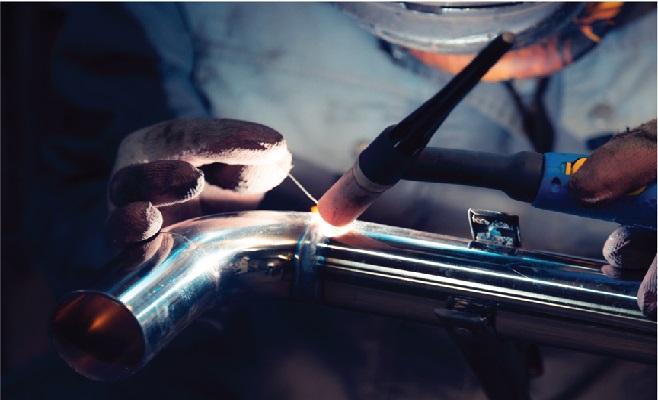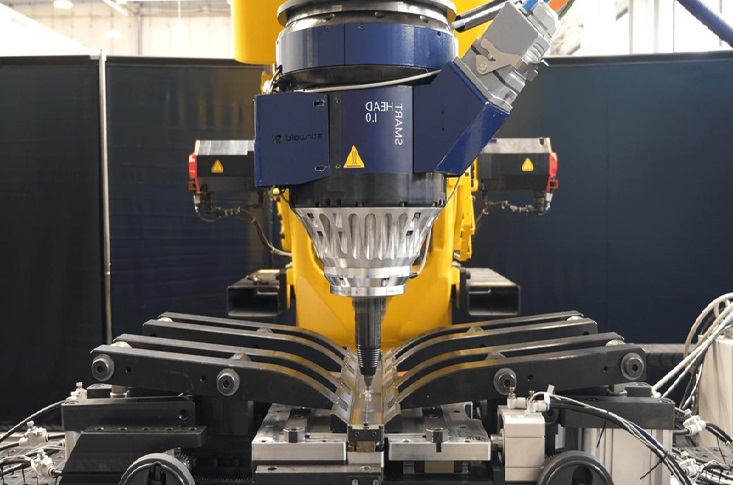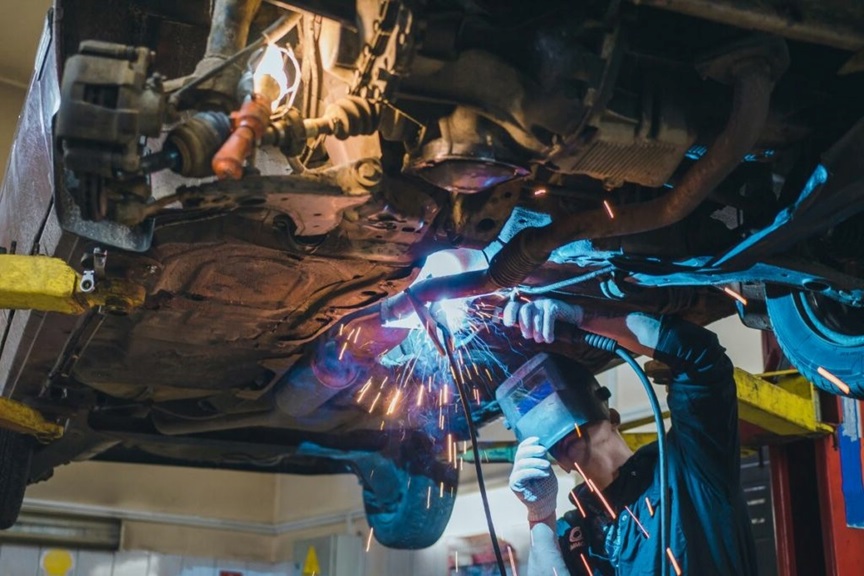The automotive industry relies heavily on advanced manufacturing processes to ensure vehicle components are durable, reliable, and efficiently produced. Welding is one of the key techniques in automotive manufacturing, essential for joining metals and other materials to create strong, seamless connections.
Various welding techniques are employed depending on the type of material, the nature of the joint, and production efficiency requirements.
Below are the most common metal welding services used in the automotive industry.
1. MIG Welding (Metal Inert Gas Welding) Service
It works by feeding a continuous wire electrode through a welding gun while using an inert gas, typically argon or an argon-CO2 mix, to shield the arc. Laser welding, an advanced technique, is becoming increasingly popular in automotive manufacturing for its precision and speed.
This method is favored for its ease of automation and speed, making it ideal for mass production of car bodies, frames, and exhaust systems.
- Materials: Steel, stainless steel, aluminum.
- Advantages: High productivity, simple setup, and ability to weld various metals.
- Applications: Body panels, frames, exhaust systems.

2. TIG Welding (Tungsten Inert Gas Welding) Service
TIG welding uses a tungsten electrode to produce an arc, while a separate filler rod is manually fed into the joint. This method provides precision and control, producing clean and high-quality welds. However, it is slower compared to other methods, making it more suitable for smaller or intricate components rather than large-scale production.
- Materials: Aluminum, stainless steel, magnesium, and other non-ferrous metals.
- Advantages: High precision, excellent weld quality, and aesthetically pleasing finishes.
- Applications: Engine components, fuel tanks, and parts requiring high precision.
3. Spot Welding Service
It involves joining two or more metal sheets by applying heat from electrical resistance and pressure at specific points, known as weld spots. Spot welding is ideal for high-speed production, particularly in joining sheet metal components like car body panels.
- Materials: Steel, galvanized steel, and aluminum.
- Advantages: Fast and efficient, minimal surface preparation, and suitable for mass production.
- Applications: Car body assembly, including doors, hoods, and panels.
4. Laser Welding Service
Laser welding, an advanced technique, is becoming increasingly popular in automotive manufacturing for its precision and speed. It uses a focused laser beam to melt and fuse materials, producing narrow, high-quality welds. This method is well-suited for automation and high-volume production lines.
- Materials: Steel, aluminum, titanium.
- Advantages: High precision, deep penetration, minimal distortion, and clean welds.
- Applications: Complex geometries, lightweight vehicle structures, high-strength steel parts.
5. Plasma Arc Welding (PAW) Service
It produces cleaner and more precise welds, making it ideal for applications requiring high-quality, consistent welds with minimal distortion. While plasma welding is less common than MIG or TIG, it is utilized in specific automotive applications.
- Materials: Stainless steel, titanium, aluminum.
- Advantages: High precision, greater control of the arc, deeper weld penetration.
- Applications: High-strength components, custom automotive parts.

6. Friction Stir Welding (FSW) Service
Friction stir welding is a solid-state welding process where a rotating tool generates heat through friction, causing the material to soften and join without melting. This method is especially useful for joining lightweight aluminum components, which are increasingly used in modern vehicles to reduce weight and improve fuel efficiency.
- Materials: Aluminum, magnesium.
- Advantages: Minimal distortion, high-strength joints, no filler material required.
- Applications: Lightweight vehicle components, electric vehicle battery enclosures.
7. Resistance Seam Welding Service
Resistance seam welding is another variation of resistance welding, where the weld is produced by rolling electrodes over the materials to be joined, creating a continuous seam. This method is particularly useful for creating leak-proof joints in automotive applications, such as fuel tanks and exhaust systems.
- Materials: Steel, stainless steel.
- Advantages: Continuous weld, high-speed production, and suitable for cylindrical and complex parts.
- Applications: Fuel tanks, mufflers, structural components.
8. Gas Welding (Oxy-Acetylene Welding) Service
While not as common in high-volume automotive manufacturing, gas welding is still used in specific repair and custom automotive applications. It involves using a flame produced by burning a mixture of oxygen and acetylene gases. This method is flexible but relatively slow, and its use has declined with the advancement of electric arc welding techniques.
- Materials: Steel, aluminum, copper, and brass.
- Advantages: Flexibility, ease of use for repairs, no electrical power required.
- Applications: Repair work, custom exhaust systems, vintage car restorations.

